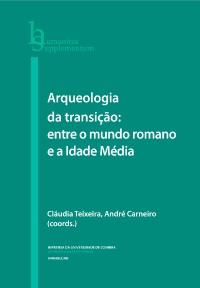Please use this identifier to cite or link to this item:
https://hdl.handle.net/10316.2/42128| Title: | De la villula a la ecclesia (II): arqueología de la transición entre el mundo tardoantiguo y el medieval en la Iberia rural: parte II | Other Titles: | From villula to ecclesia (II): transition archaeology between late antique world and medieval in rural Iberia: second part | Authors: | Martín González, Saul | Keywords: | villula;villula;ecclesia;parochia;landscape;Iberia;countryside;transformation;Villa;villula;ecclesia;parochial;paisagem rural;Iberia;transformação | Issue Date: | 2017 | Publisher: | Imprensa da Universidade de Coimbra | Journal: | http://hdl.handle.net/10316.2/41859 | Abstract: | Late Antique Iberia has one of its most interesting and significant subjects, in our opinion, in the analysis of settlement patterns in the countryside. Although it depends on every regional and local reality, we can assume that the model of Classical villa rustica doesn´t survive the first half of 5th Century. This end brings, however, new realities of settlements and new manner in order to manage the Iberian countrysides. They emerge, sometimes, even over the same structures and sites where the former villae rusticae were placed. We have already studied, in previous works, the first phase of these Late Antique rural realities (the so‑‑called, in the written sources, “villulae”). Here, in the other hand, we shall try to look for another different phenomenon: the erection of Christian structures, such churches, parishes, altars, eremitoria, etc… and their role in the new pattern of the Late Antique Christian landscape. After the first look to this subject made in the last pages by Prof. Dra. Sanz Serrano though texts, we shall manage mainly, in the other hand, the archaeological record. In this way we shall try to offer a combined interdisciplinary approaching to this phenomenon. Durante a Antiguidade Tardia, a Hispania apresenta dados muito relevantes para a análise dos padrões de povoamento rural. Embora considerando as variações regionais, parece claro que o modelo da villa rustica clássica não sobrevive para além de meados do século V. Este colapso traz novos organizações na paisagem e novos modelos de gestão das propriedades rurais. Por vezes surgem no interior da mesma estrutura que compunha a villa rustica. No presente estudo, abordamos a construção de estruturas cristãs, como igrejas, altares, eremitérios, e o seu papel nos padrões de povoamento da paisagem tardo-antiga cristã. Após a primeira abordagem feita pela Prof. Rosa Sanz Serrano, procuramos analisar o registo arqueológico e uma leitura interdisciplinar deste processo. |
URI: | https://hdl.handle.net/10316.2/42128 | ISBN: | 978-989-26-1352-9 978-989-26-1353-6 (PDF) |
ISSN: | 2182‑8814 | DOI: | 10.14195/978-989-26-1353-6_14 | Rights: | open access |
| Appears in Collections: | Arqueologia da transição: entre o mundo romano e a Idade Média |
Files in This Item:
| File | Description | Size | Format | |
|---|---|---|---|---|
| de_la_villula_a_la_ecclesia__ii_.pdf | 6.35 MB | Adobe PDF |  |
Items in DSpace are protected by copyright, with all rights reserved, unless otherwise indicated.
